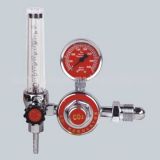|
Special price 19 April 2024
Item no.019
R13,000
Incl torch and VAT .
Foot pedal Additional
R1260 incl VAT
This item has
only two weeks warrantee if you want to use
in workshop you must choose 3 phase ones.
icm@lantic.net
315 Amp 3 Phase WSE AC/DC welding
machine click here
WSE 250
Price:
R
18,000
Incl torch and VAT .
WSE 315
Price:
R 24,000
Incl torch and VAT .
Accessories that are included:
Ground Cable
& ground clamp
TIG Torch with
Cable
Extra nozzles
Extra ceramic shield cup and swirl ring
Owners manual
Complies with IEC974 international safety
standard.
Twice inverter technology is been used to
get pure square wave, which makes the arc
more straight, heat more concentrating,
anti- clearance stronger and wider
clearance.
This machine is air cooled one.
Foot pedal
and water cooled torch can be added to the
machine if required
Gas bottle and Gas flow
regulator is excluded.
Direction:
On Google Map you can search for ICM
Industries and drive here. |
| |
|
Special Features
for TIG 200 AMPS Aluminium welding
machine:
- Features:
-
- Advanced inverter
technology, high working
frequency, reduced size and
weight and easy to carry
-
- HF pressure increasing arc
initiation and pulsation thermal
arc initiation design, excellent
arc initiation Order form 7
Performance
-
- Ample welding current, super
cost/Order form 7 Performance ratio
-
- Unique over pressure
protection design, voltage up to
380V, will not damage the
machine
-
- Unique output
characteristics design, more
suitable for filter wire
welding, excellent weld
appearance
-
- Wide working voltage range,
strong adaptability to
electricity network, high duty
cycle, more suitable for factory
continuous operation
-
- Simple structure, good
process, reliable and durable,
easy for maintenance
- Main technical parameters:
-
- Power voltage (V): AC 220
-
- Power factor: 0.93
-
- Rated input current (A): 20
-
- No-load loss (W): 35
-
- Output current (A): 10 ?0
-
- Housing protection grade:
IP21
-
- Rated output voltage (V): 18
-
- Rated output current (A):
200
-
- Insulation grade: B
-
- Max thickness (mm): 10
-
- Duty cycle (%): 60
-
- Efficiency (%): 0.93
-
- Power frequency: 50Hz
-
- No-load voltage: 42V
-
- Rated input current: 4.6kVA
-
- Gas delay time: 2.5/5s
-
- Arcing way: HF
-
- Weight (kg): 21
-
- Measurement (cm): 50 x 33 x
36
|
 Gas regulator
R 345ExcludingVAT
Gas regulator
R 345ExcludingVAT
315 Amp 3 Phase coil type that can last in
workshop click here.
Order form,
Performa invoice
|


![]()